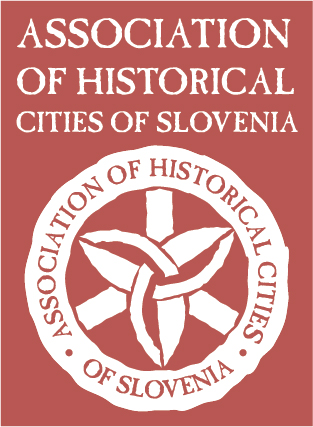
Easter dishes in historic towns
Easter, as one of Slovenia’s most cherished holidays in Slovenia, is a celebration deeply intertwined with gastronomy. Delve into the rich variety of authentic Easter dishes prepared in the bygone eras. Explore the culinary traditions of historic towns and unearth the timeless rituals that herald the arrival of spring alongside this revered holiday.
Easter, a celebration of joy and hope, is deeply rooted in tradition in Slovenia. It is observed on the first Sunday after the first full moon of spring, falling this year on March 31. The Easter season starts immediately after the Carnival and culminates during Holy Week. Additionally, Easter signifies the conclusion of Lent, a 40-day period during which Slovenian cuisine features fasting dishes such as turnips, beans, cabbage and žganci (buckwheat porridge).
Each holiday typically has its own set of special dishes, yet Easter stands out as preserving the most culinary traditions. On Holy Saturday, the ham prepared on Good Friday is blessed alongside other delicacies. This ham or sausage is served at Easter breakfast alongside a decorated loaf of white bread, symbolizing goodness, alongside obligatory dishes, such as horseradish root, wine and Easter eggs, pre-Christian symbols of fertility traditionally painted by housewives using onion peelings or herbs.
Easter dishes in Slovenia boast a rich tradition, featuring an array of delectable treats, with typical Slovenian cakes taking centre stage. Among these, potica stands out, with over eighty fillings known across the country. Among the most traditional fillings for Easter is the aromatic tarragon.
Tarragon potica (recipe by chef Judež from Novo mesto)
Ingredients
Dough
- 60 dag (21 oz) flour
- 3 dag (1 oz) yeast
- 2 dcl milk
- 14 dag (5 oz) sugar
- 14 dag (5 oz) butter (soft)
- 4 egg yolks
- 1 vanilla sugar
- salt
Filling
- 15 dag (5.3 oz) butter
- 18 dag (6.3 oz) breadcrumbs
- 2 dl sour cream
- 4 egg whites
- 12 dag (4 oz) of sugar
- tarragon (or chives) – about 10-15 grams (0.3 to 0.5 oz) of dried tarragon
Method:
Begin with the preparation of the filling. Start by whipping the egg whites until they form stiff peaks. Then, melt the butter. In a bowl, combine the sour cream, sugar and breadcrumbs, ensuring they are thoroughly mixed. Finally, gently fold in the whipped egg whites. Next, activate the yeast by placing it in warm milk with a teaspoon of sugar. Once the yeast begins to foam and show signs of life, mix it into the flour along with all the other dough ingredients. Knead the dough for at least 15 minutes to ensure proper texture and consistency. Roll out the dough without allowing it to rise, then generously spread it with the filling before carefully rolling it into potica. Refrigerate the dough overnight. About an hour before baking, use a needle to pierce the pastry several times, ensuring the holes reach all the way to the bottom. Lightly pat down the dough. Preheat the oven to 180-200°C (350-390°F), then bake the dough for one hour.
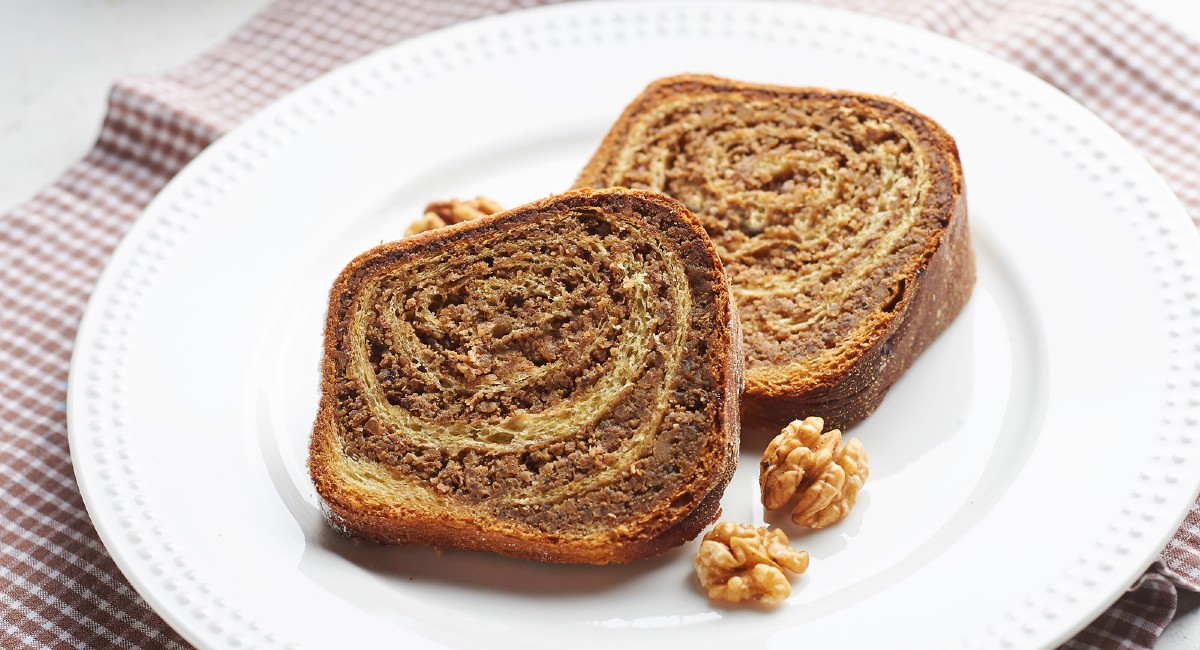
Potica, Photo: slovenia.info
The variety of Easter dishes and their diverse names beautifully illustrate the diversity of Slovenian local traditions. Continue reading, if you want to discover the array of typical Easter dishes made for the Easter festivities in Slovenian historical towns.
Easter soup
One of the oldest Easter dishes in Slovenia is the so-called “hallelujah”. It was prepared in many Slovenian towns, including the historic towns of Idrija, Žužemberk, Šentjur and Novo mesto, but each town made it a bit differently. Originally, hallelujah was a dish for the poor, said to have been created during a great famine. This is why it still represents simplicity and humbleness.
The liquid used to cook the main dish was also used to make soup. Dried turnip peelings were boiled in it to make the hallelujah. In Šentjur, they added a special twist: they mixed flour and eggs and boiled it until it was thick. If they wanted to make a sweet version, they added sugar and served it with apple pie.
Different regions have their own versions. Some like the soup thin, while others add porridge or cracklings, thicken it with flour, or use fresh turnips. If you want to make hallelujah the way they do in Žužemberk, here is what you will need:
Ingredients
- 2 l of seasoned broth (can be the one you cooked smoked meat in),
- 20-30 dag (approximately 0.7-1 ounce) of dried sweet turnip peel,
- a generous spoonful of flour,
- lard,
- 1 large onion,
- 3 tbsp of buckwheat porridge,
- 2-3 cloves of garlic,
- cracklings,
- pepper and salt for seasoning
- buckwheat žganci (spoonbread) or black bread for serving
Method:
Begin by peeling the turnip and thoroughly drying the peel. In a large soup pot, heat the lard along with the crackling, sliced onion, and chopped garlic until the onions are nicely browned. Once browned, add the flour and stir well. Slowly pour in the water or stock and add the dried turnip peelings and buckwheat porridge. Season with salt and pepper to taste. Allow the porridge to simmer gently until the buckwheat porridge are soft and tender. Serve with slices of black bread or buckwheat žganci.

Velikonočna juha
Easter in Škofja Loka area
In Škofja Loka, a town renowned for its rich traditions, a variety of local dishes is prepared during Lent and Easter. This culinary tradition is deeply intertwined with the Škofja Loka Passion Play, the country’s most celebrated Easter event and a UNESCO Intangible Cultural Heritage Site. The oldest surviving dramatic text in the Slovenian language, dating back to around 1715, vividly describes the course of the Škofja Loka penitential procession. To honour this legacy, the magnificent Škofja Loka passion play is staged every six years during Easter, faithfully following the original script and featuring a cast of 600 actors. Amidst the theatrical spectacle, locals and visitors alike indulge in Škofja Loka Lenten dishes such as Loška medla, Loška smojka, Loška mešanica, and rovtar cabbage, adding to the cultural richness of the celebration.
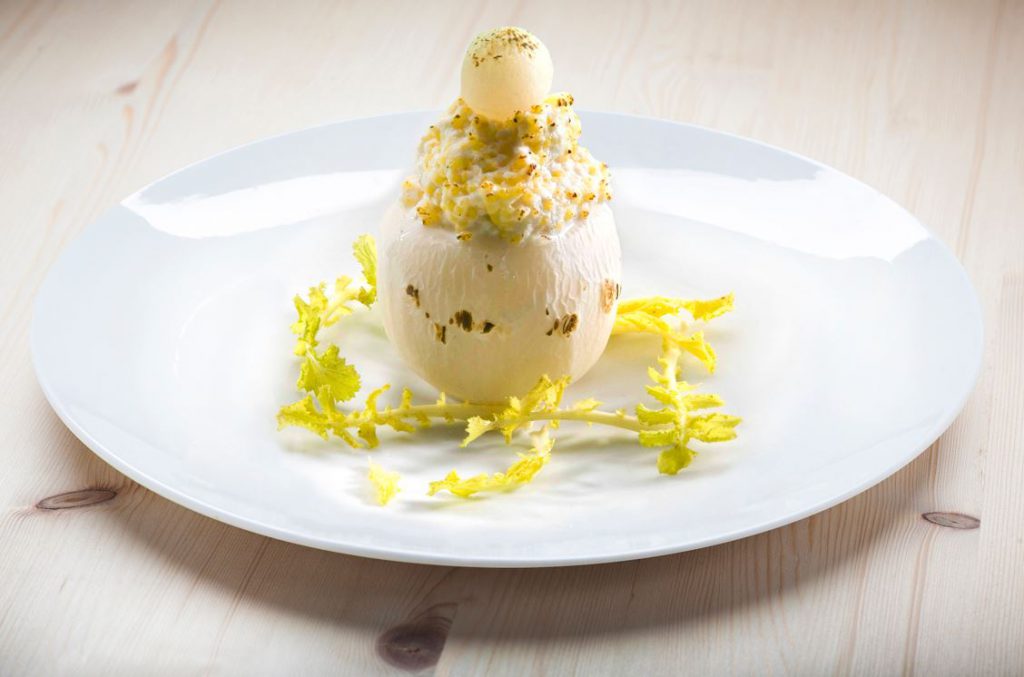
Loška smojka
Istrian festive dishes: nakelda, pinca and tičica
In the coastal towns of Koper and Piran, a number of Istrian festive dishes grace the tables during Easter. Traditional Easter dishes includes boiled eggs, homemade proscuitto ham for the rich, boiled štruklji dumblings with shoulder meat, the authentic Istrian dish called nakelda, the brawn, Istrian Easter sweet bread called pinca and tičica, a special treat cherished by children.
Nakelda, also known as nakalda, nadava, or nadova, was prepared as a separate dish, with slightly different ingredients in each village, but the main spice was always savory. To make nakelda, you need: old crumbled bread (breadcrumbs) or crumbled pinca (see below), grated sheep’s cheese, eggs, raisins, oil, savory and chicken broth. Housewives mixed the above ingredients with salt and pepper to make a suitably thick paste, adding pieces of ham or pancetta if available. The dough was then rolled out into a thick sausage and cut into about 7 cm long rolls, which were cooked in the chicken stock (or salted boiling water) until they floated to the surface.
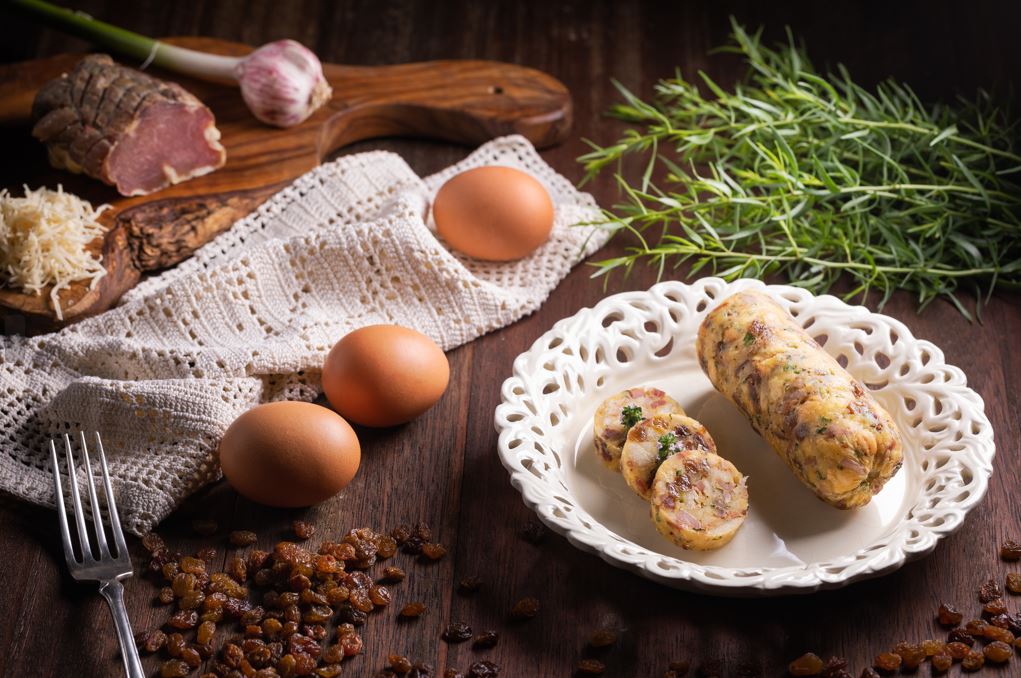
Nakelda
Pinca is a typical Istrian Easter dessert (sweet bread) still baked at home in some places. There are, however, some variations in ingredients and recipes. Pinca dough is also used to make tičica or pletenka, but with the addition of an egg. Instead of a braid, the dough can be shaped into a nest or a crown, with an egg in the middle, brushed with beaten egg and baked.

Pinca
Easter customs in Jesenice
Easter customs in Jesenice are rich with tradition. In some farms, a stove has been lit on Easter with the wood of Palm Sunday bundle (called beganica) from the previous year. If the begalica smoked, it was believed that the potica would be good. Girls would hasten to prepare Easter dishes, hoping to attract the groom. Boys enjoyed playing with the Easter eggs gifted by the girls. Both children and adults, as in many other places in Slovenia, engaged in games like chopping and rolling the eggs. In the chopping game, players aimed to skillfully stick a coin into the Easter egg so that it stayed inside. For the Easter feast, walnut potica, ham, eggs and horseradish were essential on the table.
Tuhinj stuffing
Tuhinj stuffing (Tuhinjska fila in Slovene) is a dish traditionally reserved for significant celebrations, hence it is primarily prepared during Easter in many places. Its basic ingredients include ham or smoked meat, white bread, eggs, onions, cream and spices. The Tuhinj valley near Kamnik was renowned for its delicious bread made from semi-white flour and baked in rustic bread ovens.

Tuhinj stuffing
Bela krajina stuffing
Bela Krajina stuffing (also fulanje, fuline in Slovene) is an Easter delicacy enjoyed in Metlika, Črnomelj and other areas of the Bela Krajina. Additionally, it was commonly prepared as a side dish to accompany meals during significant farm work in the fields or vineyards. This hearty stuffing demanded a generous amount of eggs, particularly for large families. Its core ingredients include white bread, eggs and bacon, with some housewives opting to include parsley or garlic for added flavour. It can be also served on its own alongside a fresh seasonal salad or used to stuff home-cooked chicken, pork ribs or veal.
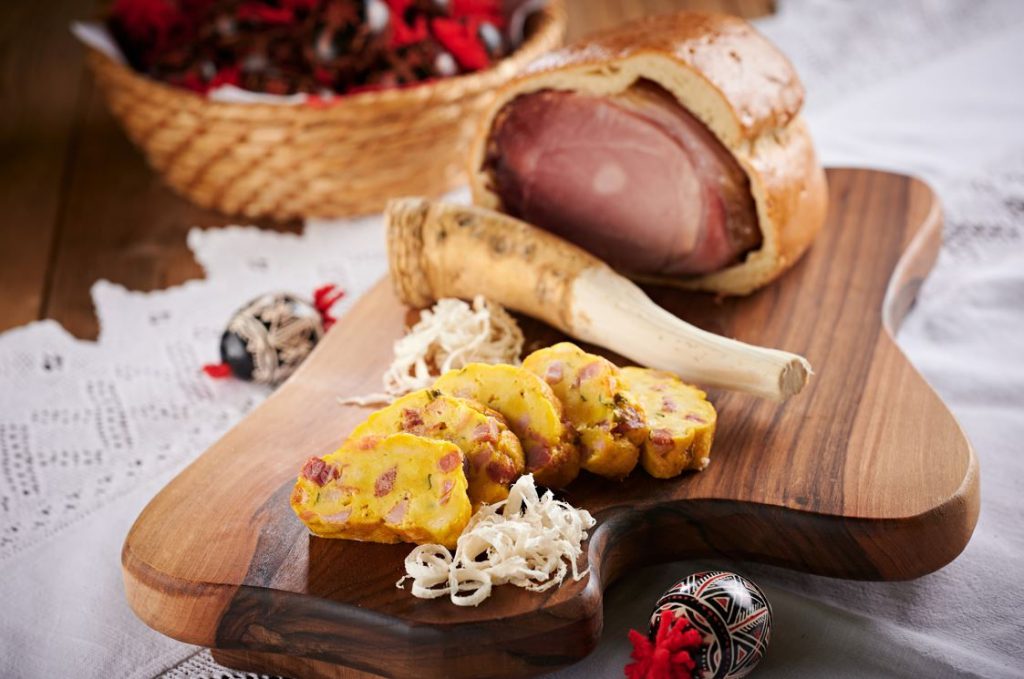
Beloakrajina stuffing
Brežice salovčki and mlinčevka
The Easter tradition of bringing a blessed fire in the form of a burning wood-decay fungus is still cherished in the Brežice area and is also observed in other Slovenian towns. Dried wood-decay mushrooms from beech or willow trees, affixed to sturdy wires, are ignited with embers from the blessed fire. It was, and in some places still is, customary for children to carry this mushroom from house to house throughout the village, gathering money, peanuts, sweets or salovčki (see below) to present to the villagers as a token of appreciation for the fire they bring.
Salovčki, or leaf fat biscuits, are savoury treats crafted from pork lard and puff pastry, prepared by allowing the dough to rise. They come in various shapes such as horseshoes, pockets or pies. To make them, whisk together flour (0.5 kg or 17.6 oz), white wine (300 ml), two eggs, a pinch of salt, and a tablespoon of sugar. Add milk if necessary and let the dough rest. Grind the salt (0.5 kg or 17.6 oz). Roll out the dough to a thickness of 1 cm. Sprinkle the salt on it (either over the entire surface or just half). Fold the dough over and let it rest for 15 minutes. Roll it out again in one direction, fold over, and turn for 90 degrees. Repeat this process several times, allowing the dough to rest in between. Finally, roll out the dough thinly, cut out circles, place a teaspoon of homemade plum jam in the center, fold over, and press with a fork to create a decorative pattern around the edges. Bake at 220° C (425° F) for 15 minutes.

Salovčki
Another excellent side dish is mlinčeva potica – mlinčevka, a tasty and succulent egg cheese pie that housewives used to prepare on major holidays, including Easter.
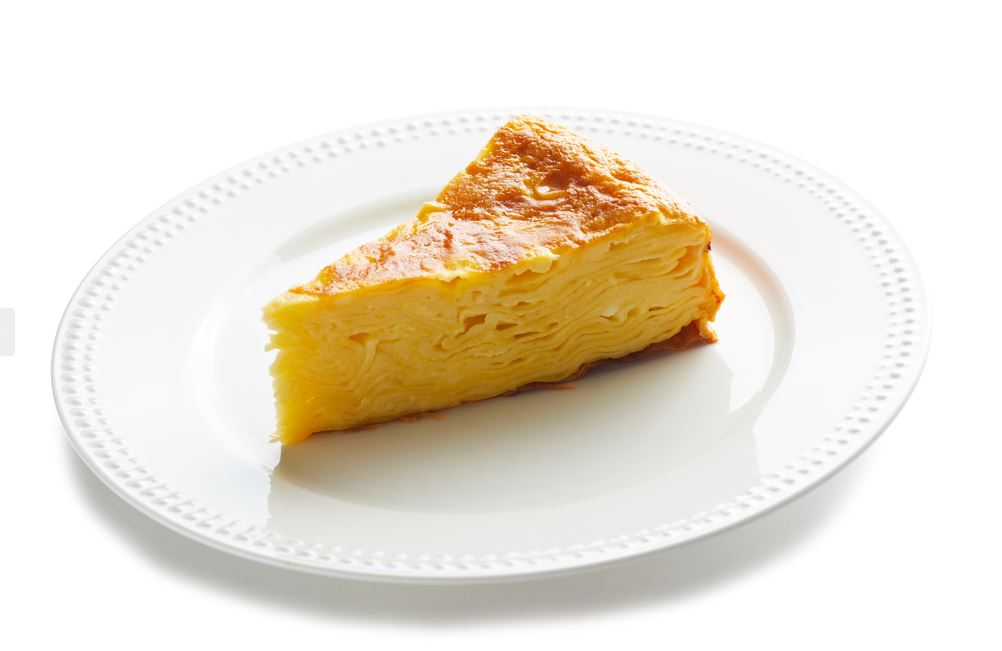
Mlinčevka
Tržič prata
Tržič’s culinary pride includes a beloved dish known as “tržišk kosiv,” dubbed “Tržič’s lunch” in the local dialect. It comprises roast or meatloaf (known as prata or budl), accompanied by salad and roasted potatoes. Prata holds a prominent place on the festive tables of Tržič, especially during Easter breakfast. The locals of Tržič whimsically describe the dish as follows: “As the name suggests, this dish is made of meat and bread. For Easter, when there is an abundance of meat and Lent is over, the meat, breadcrumbs, eggs, and sour cream are mixed together and baked in a roasting tin. This is enjoyed for breakfast at Easter, alongside a simple white cupcake.” The recipe is as follows:
Ingredients:
- Sliced old bread, soaked in milk
- Eggs
- Meat (dry, typically smoked meat, or leftover beef from soup, boiled, or roasted pork)
- Fresh parsley
- Salt, pepper
- Sour cream
- Large onions
- Pork netting
Method:
Mix the sliced and mashed bread with eggs, sour cream, fried onions and the braised or fried meat. Season with salt, pepper, and fresh parsley. Press the mixture into the casing and bake. Serve with white coffee.

Tržič prata
Fascinated by the gastronomic treasures of Slovenia’s historic towns? Dive into their flavours and embrace the distinctive experiences awaiting you in there!



